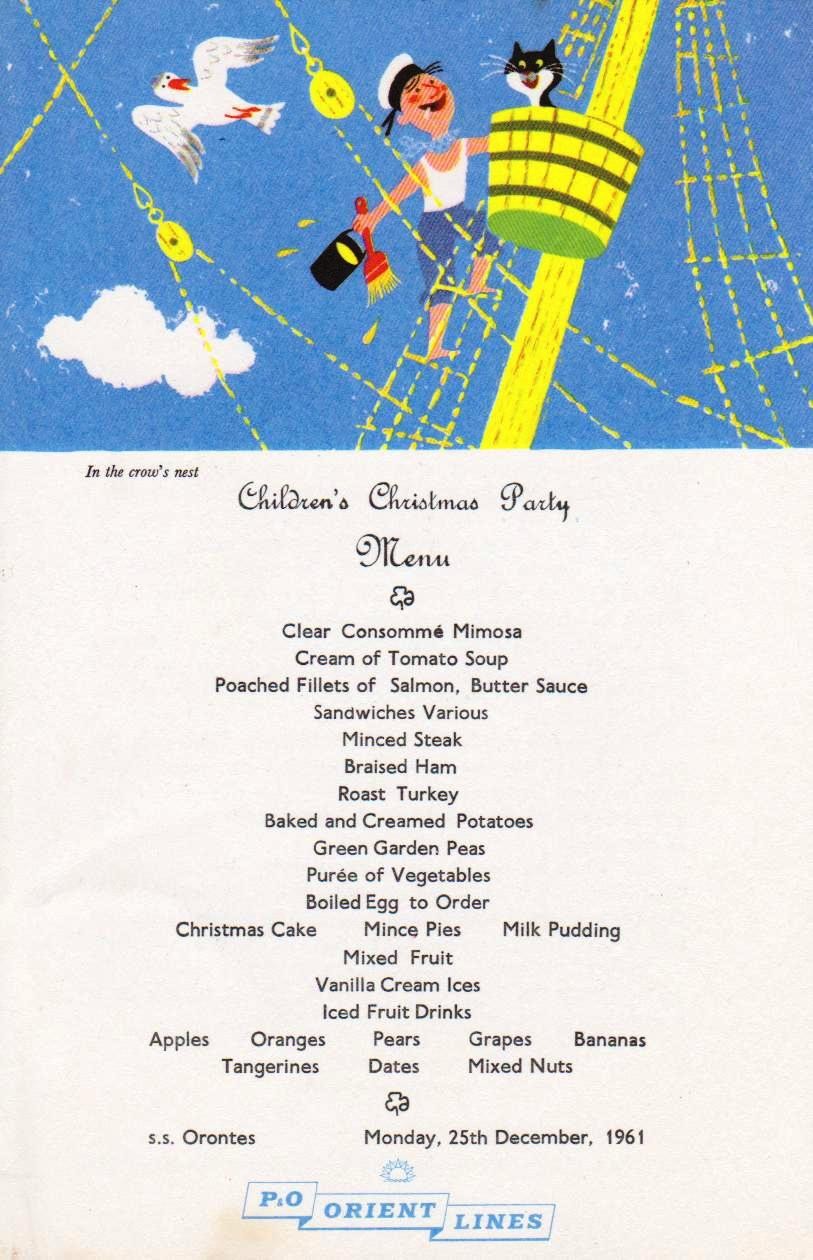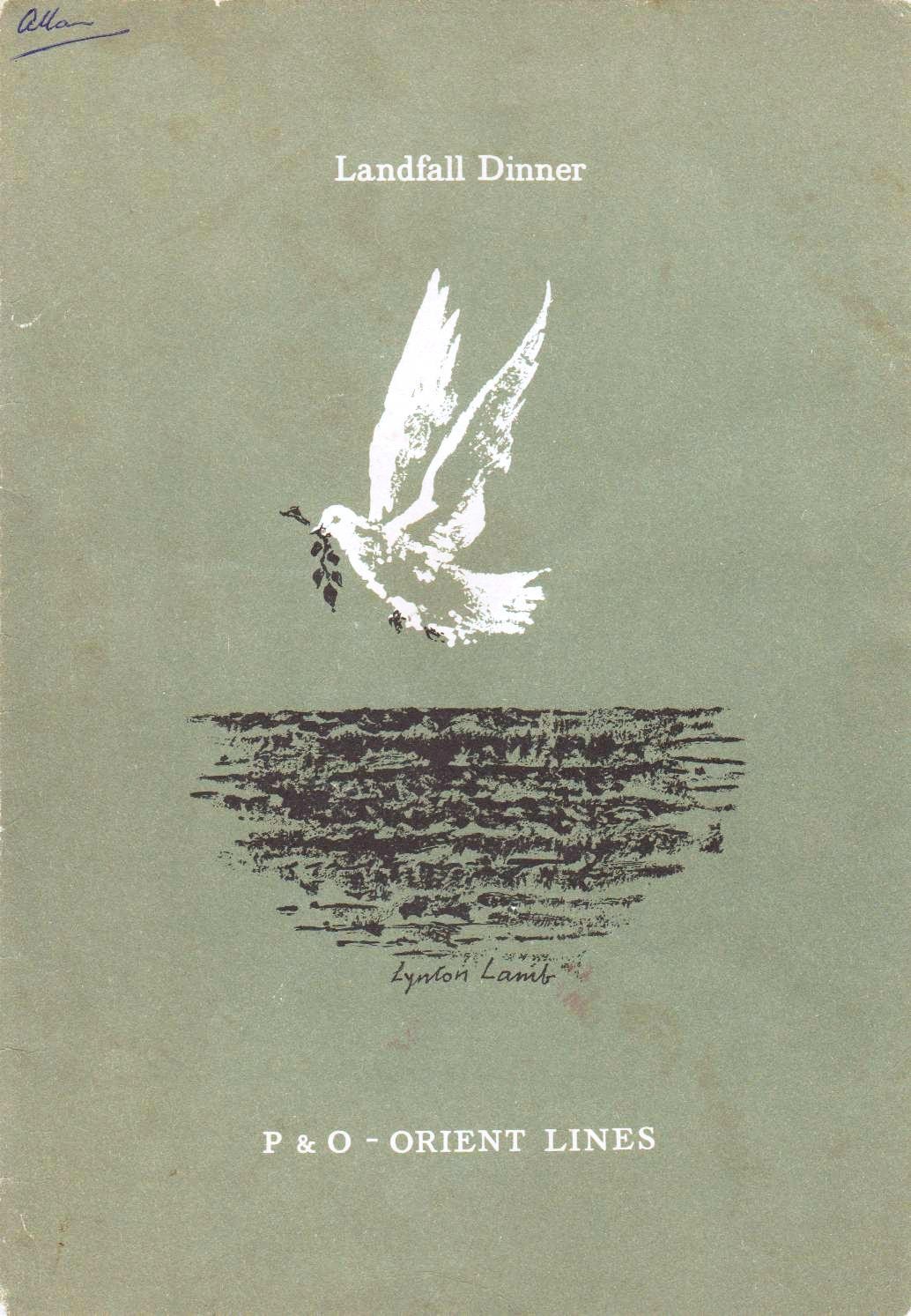Tales of the Orient Line, the Oronsay and the Australian journey
By JOL Admin | 2 April 2013
Post-World War II shipping lists, a major shipping line of the time, its vessels, and the voyage to Australia, were the focus of recent presentations. These were conducted by the State Library of Queensland, together with Queensland State Archives and National Archives. They formed part of a series among Brisbane repositories with related records, organised by the Queensland Migration Heritage Partnership, which also included the Queensland Museum and the Queensland Maritime Museum. The central interest was the Orient Line and its ships named Oronsay which were in many ways emblematic of Australian immigration and cruising after the war.

It is worth noting that three vessels called Oronsay (the name of a Scottish Hebridean tidal island, derived from the Isle of Oron) came to Australia. Two of these (1925-1942; 1951-1975) belonged to the Orient Line and played a significant role in immigration and cruising. This is a reminder that an image or account of a particular vessel may not always relate to the vessel in which a researcher is interested: many vessels shared the same name.
The program was an opportunity to explore some of the places where ships’ pictures may be found. Among the places images may be located is Trove, the free Australian website to which the State Library of Queensland is a contributor.
National and State Archives hold lists of post WW2 immigrants. State Archives has provided an index of Oronsay migrants on its website.
Check arrivals for those to Queensland and elsewhere in Australia on the National Archives of Australia website at or use RecordSearch with the words: nominal Oronsay and put the year in the date range. Many migrants from these days have a powerful influence on Australia today: for instance, Tony Abbott’s family arrived on the Oronsay in 1960.
In addition, newspapers sometimes provide revealing accounts and photographs of the ships and new arrivals. Many newspapers up to 1954, but not all, can be found on Trove. The State Library holds the largest collection of Queensland newspapers, far more than are on Trove, often from their beginnings, and their range extends beyond 1954 to the present. There are also the major dailies and newspaper databases which cover even more titles. The State Library holds photographs, documents, histories, diaries, and a variety of accounts related to these voyages and passengers.

During the time of the Orient Line the journey to Australia had been reduced from 85 days in the 1870s to 45-52 days post WW2. The level of passenger comfort, which included greater space, better food (much better than many migrants had ever experienced), swimming pools and air conditioning, increased. This made the cruise desirable for the better-off, for the sake of travel and the pleasures of the destination. Attention was increasingly given to aspects of the journey to make it very special. Menus were artistically decorated; children’s menus featured not just enticing illustrations, but also excerpts from stories which developed during the trip. The souvenirs travellers treasured and kept included beautifully presented printed summaries of the background of ports of call with indications of their highlights.
Wonderful events enhanced shipboard occasions. Passengers also wrote diaries charting their memorable experiences in what, for many, was a life-changing journey. The Orient Line produced fabulous guides, and the State Library holds various editions. The increased use of air travel for migration during the 1960s and 1970s altered and dramatically reduced this world of transition which had been, for some, an idyll.
The program with State and National Archives allowed those attending to share their thoughts, memories and souvenirs. Many had been passengers on the Oronsay or another Orient Line vessel and could provide first-hand insights to share.
The white gloves tour the following week was an opportunity for people to look at some of the originals of Orient Line guides, posters, diaries and photos, as well as books on the history and tales of these vessels. Lesley Rouse, who had kept her children’s menus and certificate from King Neptune in perfect condition, told the story of her father’s wish to remove his children from the cold of Scotland. The family went to Mt Isa! She also recounted her mother’s desperate search for her children when there was a report of someone overboard. The thrills and fears of such a trip came alive for many.
Another way for people to present this personal view of the Orient Line trip was to bring related images to put up on the net in a pin-a-thon during a session that afternoon. State Library contributes pictures to Historypin where images from around the world are shared on one site.
The State Library has notes from the sessions in which it played a part, together with a select list of annotated resources. If you would like a copy emailed to you send your request to us using the online form. Check for even more about immigration and shipping by using the One Search online catalogue and information guides.
Stephanie Ryan - Senior Librarian, Family History, State Library of Queensland
Comments
Your email address will not be published.
We welcome relevant, respectful comments.